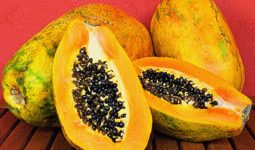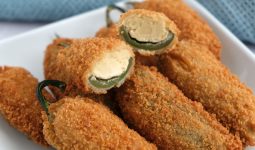Whether you need to unwind after a long day at work, throw a party, invite friends and family over for dinner, or relax by watching the sunset, a bottle of wine can never go wrong.
Wine is always an excellent option for any occasion. But, as excellent an option as wine can be, you need to consider the ingredients that go into the production of wine, especially the sugar content.
Knowing how much sugar is in wine allows you to make an informed decision when purchasing wine, so you know how much sugar you consume per glass or bottle.
Wines are made from grapes. Grapes contain natural sugar, which turns into alcohol through fermentation. Different wines have different sugar levels, and this is called residual sugar.
Residual sugar is the amount of sugar left in the wine after grapes have fermented and undergone other wine-making processes.
Residual sugar determines the amount of sugar in wine. Different methods of winemaking determine the varying levels of residual sugar in wines.
Some winemakers create high-sugar wines by leaving extra grapes ripe on vines before picking them.
These extra-ripe grapes become extra sweet, thereby producing more sweet wines. These types of wines are known as late-harvest wines.
Another method that winemakers mostly use is to stop the process of fermentation before the entire sugar content of the grapes is turned to alcohol, resulting in a wine with high residual sugar.
Other winemakers add additives such as sweeteners or sugar to enhance the sweetness of their wine. Different wine styles have peculiar sugar levels.
Knowing the different styles of wine will help you make an informed decision about which wines are best for your health and taste.
Wine Styles and Their Sugar Content
Dry Wine
This type of wine has very little sugar content, ranging from 0.1 % to 0.3 % (about 1 to 3 grams per liter of wine).
Dry wines are made when yeast converts almost all the grapes’ sugar content into alcohol during fermentation.
If the wine is extremely dry, it is known as “bone dry wine,” and wine drinkers can hardly detect the sugar levels of such wines.
Dry wines could be red or white wine. The most common red wines and many white wines are dry wines.
Dry wines taste acidic and astringent, leaving a puckering or rough feeling in your mouth upon consumption.
The dry mouthfeel is obtained from the wine’s high tannin content. Tannins are naturally occurring bitter and astringent compounds found in grape skins.
Even though there is no residual sugar, dry wines may give off a sweet impression due to the presence of tannins, acids, and glycerin in the wine.
Some dry red and white wines are Cabernet Sauvignon, Pinot Noir, Sangiovese, Tempranillo, Merlot, Malbec, Syrah, Garnacha, Zinfandel, Sauvignon Blanc, Chardonnay, Pinot Gris, Chenin Blanc, Moscato, Riesling, Viognier.
Off-dry or Semi-sweet Wines
These types of wines fall between dry wine and sweet wine. Off-dry wines have a residual sugar level that ranges from 1 % to 5 % (about 10 to 50 grams of sugar per liter).
If you are looking for a wine that is neither too dry nor too sweet, then the best option is an off-dry wine.
Examples of off-dry wines include White Zinfandel, Rieslings, and Chenin Blanc.
Sweet Wine
The extremely sweet taste of sweet wines results from their high residual sugar content.
This sugar is obtained by rapidly chilling the wine to stop the fermentation process, thereby preventing the yeast from further converting the sugar to alcohol.
Some winemakers add sugar to the grape juice before fermentation. Sweet wines have a sugar content of above 30 grams per liter.
Very sweet wines are considered dessert wines; they have a very high sugar concentration and are usually paired with a sweet dessert.
Examples of sweet wines are Port, Madeira, the Sweetest version of Chenin Blanc, Sauternes, And Rieslings.
It is important to note that the higher the alcohol content of wine, the less its residual sugar, but the higher its caloric content.
This is because alcohol has seven calories per gram, while carbohydrates have four calories per gram.
Therefore, the higher the alcohol level in wine, the higher its caloric count. White wines usually have a lower alcohol content than red wines, and sparkling wines have very low-calorie alcohol.
If the nutritional contents of the wine you intend to purchase are not disclosed on the bottle, you can always check in with the winery.
A wine tech sheet can be used to know the amount of residual sugar in a bottle of wine. The following is an easy guide to reading tech sheets:
- Dry wines have a percentage sweetness below 1 %
- Off-dry or semi-sweet wines have a sweetness of 3 % and above
- Sweet wines have a sweetness of 5 % and above
- Dessert wines or very sweet wines start from 7 to 9 %.
How to Measure the Alcohol Content of Wines?
The easiest way to measure wine’s alcohol content is to use a hydrometer, which measures the wine’s specific gravity.
If you are home brewing your wine, a hydrometer measures the alcohol by volume, measuring the amount of sugar turned into alcohol. As the sugar level of the wine falls by forming alcohol, so does the specific gravity of the wine.
So, if you are interested in low-sugar wine, stick with dry wines, and if you have a sweet tooth, dessert wines are your go-to.








